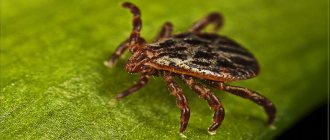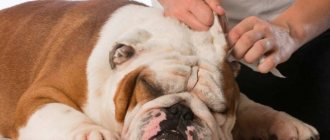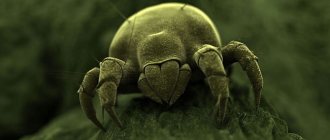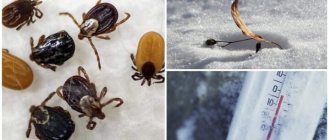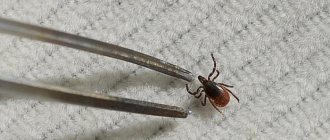The causative agent of the disease
The skin pathology demodicosis manifests itself as a result of damage to the epidermis by a parasite of the Demodex folliculorum (Demodex) group. When conditions are favorable, large colonies of these microscopic mites multiply inside the hair follicles and in the surrounding areas where sebum is secreted.
Often, glandular acne (or demodex) lives on the epidermis in the facial area. The parasitic mite can affect the chin, cheeks, eyelashes, eyebrows and eyelids. In the most advanced cases, the microorganism multiplies in the ear canals.
Types of demodex
Experts distinguish several types of ticks:
- Demodex brevis is a small parasite whose colonies settle primarily in the sebaceous ducts;
- Demodex folliculorum is a long acne that parasitizes hair follicles.
It is worth noting that both types of microscopic mites constitute the natural microflora of the epidermis. If a person does not have problems with immunity and secretion, demodex does not pose a threat to health and even performs conditionally protective functions for the body. If the nature of the external and internal environment changes, the parasite begins to actively reproduce.
Both Demodex brevis and Demodex folliculorum do not like sunlight. For this reason, increased activity of both types of ticks occurs at night. Such parasites are transmitted from one person to another through contact with household objects.
Characteristics of the tick
The Demodex mite genus was first discovered in 1842. There are more than 65 subspecies. But in humans there are only two of them:
- Demodex brevis: settles on the sebaceous ducts of the glands and appears in the area of the nasolabial triangle, forehead, cheeks, brow ridges;
- Demodex folliculorum: lives in the mouths of the follicles of the eyebrows, eyelashes, hair (on the head and chest).
The life cycle of ticks lasts from 15 to 25 days. During this time, they manage to go through all stages of development: egg - larva - nymph - adult (imago). The size of an adult demodex is 0.4 mm and can only be seen under a microscope. Ticks reproduce by laying eggs.
The highest level of activity of the microorganism is observed at night: the tick does not like sunlight. At a temperature of +14°C it goes into torpor, and at +30°C it actively develops, so the disease worsens in the spring and summer. Demodex does not reproduce outside the human body and lives for 2-3 days.
Appearance
The eel worm, a photo of which can be seen in the article, is a transparent oblong worm, the length of which can reach 0.4 mm. The body of the parasite is divided into 2 segments. The anterior section includes 4 pairs of legs. There is also a spoke-shaped mouthparts located here, which allows the tick to absorb bodily secretions that are secreted from the sebaceous glands and hair follicles. The hind section has no legs and is a container for primitive digestive organs.
The surface of the body of the acne gland is covered with microscopic scales. The latter help to retain it on human skin. Parasitic organisms move quite quickly across the surface of the epidermis, multiplying and contaminating new areas with the products of their vital activity.
Description
Stages of tick development (from left to right): egg, larva, protonymph, nymph and adult
The body of the tick is almost transparent. Along with eggs and larvae, there are protonymph and nymph stages. The development cycle ranges from 14 to 20 days.
The ironweed has an efficient digestive system that converts most waste into gases. She has no anus[3], her intestines grow until she dies[4].
Males
Males reach an average length of 279.7 microns, of which 70% is located on the rear part of the body. The mouth area (gnathosoma) is trapezoidal and wide at the base[5].
4 pairs of legs of an adult animal are located on the ventral side of the front of the body ( Podosoma
). On each tarsus there are two claws divided at the end into two parts with a large spur directed backwards. The pedipalps have 5 tiny, backward-pointing claws. Penis length 24.2 microns[5].
Females
Females, with the same proportions, are larger than males. They reach a length of an average of 294 microns, with a maximum of 436.5 microns. The gnathosoma is the same as that of males, but, on average, wider and longer, by about 2 µm. The legs are the same size as those of males. The vulva is a simple longitudinal incision, 8.5 µm long, between the fourth pair of limbs[5].
Life cycle of glandular acne
Parasitic mites develop from eggs. The iron bugs begin to show activity from the larval stage. Later, the parasite transforms into the form of a nymph - an individual extremely similar to adult organisms, but lacking the ability to reproduce. Then an adult, sexually mature tick is formed.
The development of the parasite organism occurs over several weeks. During this time, the individual gains mass, increases in size and actively reproduces. Among such microbes there are approximately equal numbers of females and males. Skin parasites mate in the follicular cavities of the hair or the mouths of the sebaceous glands. Eggs are also laid here, from which larvae appear within 2-3 days. It takes a few more days for young individuals to turn into nymphs.
What is demodicosis?
The Demodex mite is opportunistic (it causes disease only in the presence of a favorable environment). If the rules of hygiene are observed, the microorganism does not show signs of its existence and the person does not encounter this disease. The disease occurs in animals and humans.
Acne glands live in the mouths of the sebaceous glands in the eyebrows, eyelashes and hair follicles. Biological studies have proven that demodex is a participant in the process of skin biocenosis and maintains optimal pH balance. The mite also destroys pathogenic bacteria that settle on the surface of the dermis.
Often the symptoms of the disease appear on the skin of the face, as there are a large number of sebaceous glands there. In some clinical cases, rashes can be observed on the back, neck and chest. The disease is more common in women - their skin is much more sensitive than men's. The main factors for the development of demodicosis: oily skin type, decreased immune defenses, and the presence of chronic diseases.
Reasons for the development of demodicosis
The cause of the disease is, first of all, the emergence of favorable conditions for high activity of Demodex parasites.
A prerequisite for accelerated reproduction of the mite is a disruption of the natural balance of bodily secretions, as well as hyperactivity of the sebaceous glands. Similar phenomena arise against the background:
- hormonal imbalances;
- taking medications whose active ingredients lead to changes in the natural microflora of the epidermis;
- increasing the level of oily skin;
- reducing the body's protective abilities;
- serious emotional experiences, the formation of prolonged stress and depression.
The iron mite acne shows particular activity when the ambient temperature rises to levels ranging from 30 to 40 °C. Based on this, exacerbations of demodicosis are often observed in the spring and summer. In addition, the disease begins to progress in people prone to such pathologies in the case of frequent hot baths, visits to the sauna, bathhouse, and solarium. In the absence of suitable conditions for reproduction over a long period of time, the iron beetle can maintain vital activity while remaining on household objects.
Causes of demodicosis
Acne is transmitted from a sick person to a healthy person through contact. Most often it affects the sebaceous glands and hair follicles on the face.
The tick can move on the skin, but only at night. It does not penetrate the internal organs.
The parasite feeds on subcutaneous fat and skin cells. It reproduces in hair follicles, laying eggs. The larvae appear on the fourth day, and within a week they turn into adults.
The mite lives 15-25 days , then decomposes inside the sebaceous gland or hair follicle. The waste products of parasites provoke inflammation of the epidermis with the formation of acne.
Active reproduction of acne mites on the face is facilitated by:
- decreased immunity,
- increased secretion of the sebaceous glands,
- chronic diseases that weaken the body’s defenses,
- disruption of the endocrine system, gastrointestinal tract,
- skin lesions of various types,
- poor hygiene,
- use of low-quality cosmetics,
- smoking, drinking alcohol,
- eating fatty, fried, smoked foods, fast food, sweets,
- elderly age,
- long-term use of certain medications,
- frequent visits to the sauna, bathhouse.
Frequent stressful situations and disturbances in the psycho-emotional state can provoke demodicosis
Once infected, parasites begin to reproduce only if one or more of these factors are present. The tick is most active when the ambient temperature is 25-30 ºС.
Video: Demodicosis. 7 principles of treatment
Trigger mechanism of demodicosis disease
Scabies and glandular acne are common skin parasites, the mechanism of activation of which is not fully understood. To this day, it is unclear why microscopic mites of this nature begin to multiply rapidly at a certain moment and suddenly stop multiplying under similar conditions.
Experts consider the use of cosmetics containing hormonal components to be one of the main triggers for demodicosis. The latter are the favorite food of parasitic mites. In such situations, the pathogens of the disease not only begin to show increased activity on the skin, but also end up in containers with cosmetics, where they also develop and then re-infect a person.
Another trigger is deterioration of the skin condition and the appearance of looseness in its structure. In most cases, the problem affects women. Under such conditions, damage to the epidermis by the causative agent of the disease in men occurs much less frequently. The reason is frequent shaving, during which the blade removes dead, keratinized layers of skin where the microscopic mite has barely managed to gain a foothold.
Biology and ecology of iron mites
The two types of mites that parasitize the human body are usually separated. D. follicullorum
prefer hair follicles of eyelashes and eyebrows, less often - hair on the head and chest.
D. brevis
mainly live in the sebaceous glands of the facial skin (nasolabial folds, wings of the nose), but can also be found on other areas of the skin: on the chest, back, neck - where the sebaceous glands are located.
The number of D. follicullorum
can reach 18 specimens per follicle, and
D. brevis
- 3 specimens in the sebaceous gland.
It is not uncommon for the same patient to have a co-infestation of D. follicullorum
and
D. brevis
.
Iron mites feed on the contents of the epithelial cells of the walls of hair follicles and sebaceous glands. The development cycle of these ticks includes five stages of development: egg, larva, first-instar nymph (protonymph), second-instar nymph (deutonymph), and sexually mature individuals (female or male). Mating of a female and a male takes place at the mouth of the hair follicle. The fertilized female moves deep into the follicle and lays eggs there. The interval between mating and oviposition is approximately 12 hours. A larva emerges from the egg, which feeds and molts, becoming a protonymph. This nymph, in turn, feeds and at the same time moves to the mouth of the follicle with the current of the secretion of the sebaceous glands, where it molts, becoming a nymph of the second instar. The deutonymph, having emerged on the surface of the skin, is able to move from follicle to follicle for 12–36 hours. Then it penetrates the hair follicle and turns into a female there. The duration of each stage of tick development varies from 36 to 120 hours. The entire life cycle of the female D. folliculorum
is about 15 days.
Demodicosis is common among people of all races. A person's gender does not appear to affect the incidence of tick infestation; men are simply less likely to see a doctor about their appearance. With age, the frequency of detection of D. brevis
increases, and
D. folliculorum
remains virtually unchanged. In humans, demodicosis often accompanies other skin or ophthalmological diseases, for example, rosacea, perioral dermatitis, blepharitis. However, it is necessary to emphasize once again that demodicosis is associated primarily with damage to the skin of the face.
Infection of humans with iron ticks occurs mainly through direct person-to-person contact. It is believed that during the daytime, iron mites are located mainly in the follicles, and come to the surface of the skin only at night. It follows that the most likely time for ticks to transfer from one host to another is at night. However, M. Norn recorded actively moving iron mites on the surface of the facial skin during the daytime.
Infection through household items is possible, since it has been shown that iron mites can remain viable outside the host’s body for quite a long time. With constant humidity, darkness and an air temperature of 19–22 °C, ticks remain alive for up to 9 days. Iron mites are also detected in house dust collected from bedding. In laboratory conditions, at a relative air humidity of 80%, iron mites remained viable for several days, while at a relative humidity of 40% and an air temperature of 20 ° C they died after 1.5 hours. In water they remained viable for a week, and in immersion oil – 2 weeks. However, it is unclear whether these mites retain the ability to infect a new host under environmental conditions.
1.3
Stages of demodicosis
Damage to the skin by acne, which causes demodicosis, occurs in several stages:
- Erythematous - redness of large areas of the epidermis is observed without obvious reasons. The effect lasts for a long time. The skin tone gradually changes, moving from pink to purple and bluish. Subsequently, distinct, pronounced vascular veins are formed.
- Papular-pustular - all kinds of pimples and ulcers form in the structure of the skin. Externally, the papules, in which colonies of microscopic parasites are concentrated, resemble ordinary juvenile acne.
- Hypertrophic is the most complex stage of the disease, which is characterized by a noticeable thickening of the patient’s skin, up to the appearance of ugly loose depressions on the surface of the epidermis. The phenomenon is observed as a result of the expansion of inflamed sebaceous glands.
Diet for demodicosis
During the treatment period it is necessary to follow a diet . Without receiving enough nutrients from the skin, mites will die.
In addition, parasites often increase activity during gastrointestinal dysfunction, therefore, it is necessary to normalize the functioning of the digestive system.
The following products are prohibited:
- fatty,
- smoked,
- roast,
- alcohol,
- caffeinated drinks,
- citrus,
- bee products.
Eliminate or reduce to a minimum starchy and sweet foods . Glucose fuels the vital activity of the parasite. Citrus fruits and honey are strong allergens that can increase skin irritation.
Other prohibited products provoke irritation of the gastrointestinal mucosa, weaken it, and contribute to its gradual destruction. As a result, inflammatory processes in the epidermis intensify.
The menu of a patient with demodicosis should include:
- vegetables, greens,
- low-sweet fruits,
- dairy products,
- lean meat, fish (boiled),
- porridge, bran,
- nuts, dried fruits,
- wholemeal bread,
- fresh juices.
It is necessary to increase the amount of liquid consumed (mineral water, drinking water, compotes, fruit drinks, etc.). This helps remove harmful substances from the body.
Diagnostics
When suspicions arise about the development of the disease demodicosis, what does the diagnosis suggest? Acne is detected by a biological sample taken from the patient. The latter is examined under a microscope. A week before the intended visit to the laboratory, a person should not use cosmetics or care for the body using alkaline hygiene products. If this condition is neglected, the diagnostic results may be incorrect.
If you suspect the development of demodicosis, a sample is taken in the following ways:
- performing scrapings from the affected areas of the epidermis;
- taking eyelashes for analysis;
- gluing a special transparent tape to the problem area, which is removed after a while and placed under a microscope between the instrument glasses.
Iron pincers. Demodicosis
Problematic skin, especially if it is facial skin, causes a lot of suffering.
In this case, iron mites are often found in patients with skin defects. Typically, skin diseases caused by parasitism of iron mites are called demodicosis (demodicosis). The term "demodex" comes from the Latin name for mites belonging to the genus Demodex
.
In addition to humans, iron mites parasitize the skin of humans and various animals, including domestic animals (dogs, cats, horses, cattle, sheep, goats, pigs). The genus Demodex
contains at least 65 species, 10 of which are considered pathogenic parasites of humans and domestic animals. However, they are strictly specific to each species, i.e., parasitic ticks of domestic animals are not capable of parasitizing humans. For some animals, demodicosis can be fatal, for example, for dogs, especially for puppies.
D. follicullorum
was first discovered in 1841. In 1963, L. Kh. Akbulatova described another species of human iron mite -
D. brevis
.
1.2
Symptoms of demodicosis
Let's find out how demodicosis manifests itself and determine its symptoms. Acne as a causative agent of the disease during active reproduction contributes to:
- the occurrence of quite severe itching of the facial skin, the intensity of which increases in the evening;
- the appearance of swelling and redness in the eyelid area;
- the formation of small flakes of dead skin at the roots of the eyelashes, the latter sticking together in the morning;
- the formation of concentrated areas of small and large acne, pimples, and ulcers on the face;
- a greasy, shiny appearance of the epidermis near the nose, on the cheeks;
- the appearance of textured bumps on the skin;
- increased loss of eyelashes and eyebrow hair.
Lifestyle
Mites affect people of all skin colors, regardless of gender and origin, although with varying frequencies. Thus, in Tokelau, ticks were found in 7.6% of those studied, in Western New York - in 55% of those studied. They inhabit approximately every person during his lifetime; While newborn babies are not yet affected, people over 70 years of age have a 100% chance of being affected.[6][7]
Acne mites inhabit hair follicles on top of the sebaceous gland, mainly on the face, as well as on the chest, sometimes on the knees, tongue and foreskin. Ticks survive the death of their host for some time, reports indicate a period from 8 days to already severely decayed 14-day tissue[6].
Acne mites feed on sebum; often three or more individuals inhabit one follicle. In this case, the gnathosoma is always facing downwards, the legs are towards the epithelium of the follicle, the long end of the body clearly looks out from the opening of the follicle in adult animals [5].
Prevention
To prevent the development of demodicosis, what prevention should be performed? Acne spreads massively on the skin if basic hygiene is not observed. Therefore, among the preventive measures to avoid the occurrence of demodicosis, it should be noted, first of all, careful care of the condition of the facial skin. In addition, it is extremely important to follow personal hygiene standards and not use other people’s cosmetics.
Proper, healthy nutrition plays an important role. Eating high-quality, fresh foods and forming a diet based on balanced dishes allows you to strengthen the immune system and prevent weakening of the body and its subsequent damage by acne.
Treatment of demodicosis with medications
It is not so easy to destroy the causative agent of the disease. The reason is that the parasitic mite has a natural defense in the form of a durable shell, through which not all active ingredients of medications penetrate. Therefore, the means to eliminate the problem should be selected by the attending physician, based on the form of the disease and the individual characteristics of its course. The patient should be prepared to undergo a fairly long course, because the viability of acne is about four weeks.
List of suitable medications:
- zinc-ichthyol ointment;
- yellow mercury ointment;
- benzyl benzoate ointment 10%;
- Sulfuric ointment;
- "Permethrin";
- "Amitrazole".
Important! Therapy using any of the above medications should be carried out only after consultation with a doctor. The use of drugs without high-quality diagnosis of the disease and monitoring by a dermatologist can lead to the most unforeseen consequences.
Traditional medicine methods
It should be noted right away that traditional methods of therapy are absolutely unable to completely eliminate the disease. Acne with demodicosis is quite resistant to the effects of non-drug agents. Such solutions only make it possible to alleviate discomfort during the development of the disease and speed up the effect of pharmacological drugs. For these purposes, you can use the following tools:
- Medicinal chamomile - used to wipe acne-affected areas of the skin. The use of a tincture from the plant in the form of baths for washing can relieve inflammation and reduce the pathogenic bacterial effect on the epidermis.
- Laundry soap - one of the main components of the product is sulfur, which has a bactericidal and anti-inflammatory effect on the skin. To eliminate the unpleasant symptoms of the disease, it is enough to use this soap for washing at least twice a day. The disinfecting and calming effect lasts for 3-4 hours. The result is a reduction in the severity of itching.
